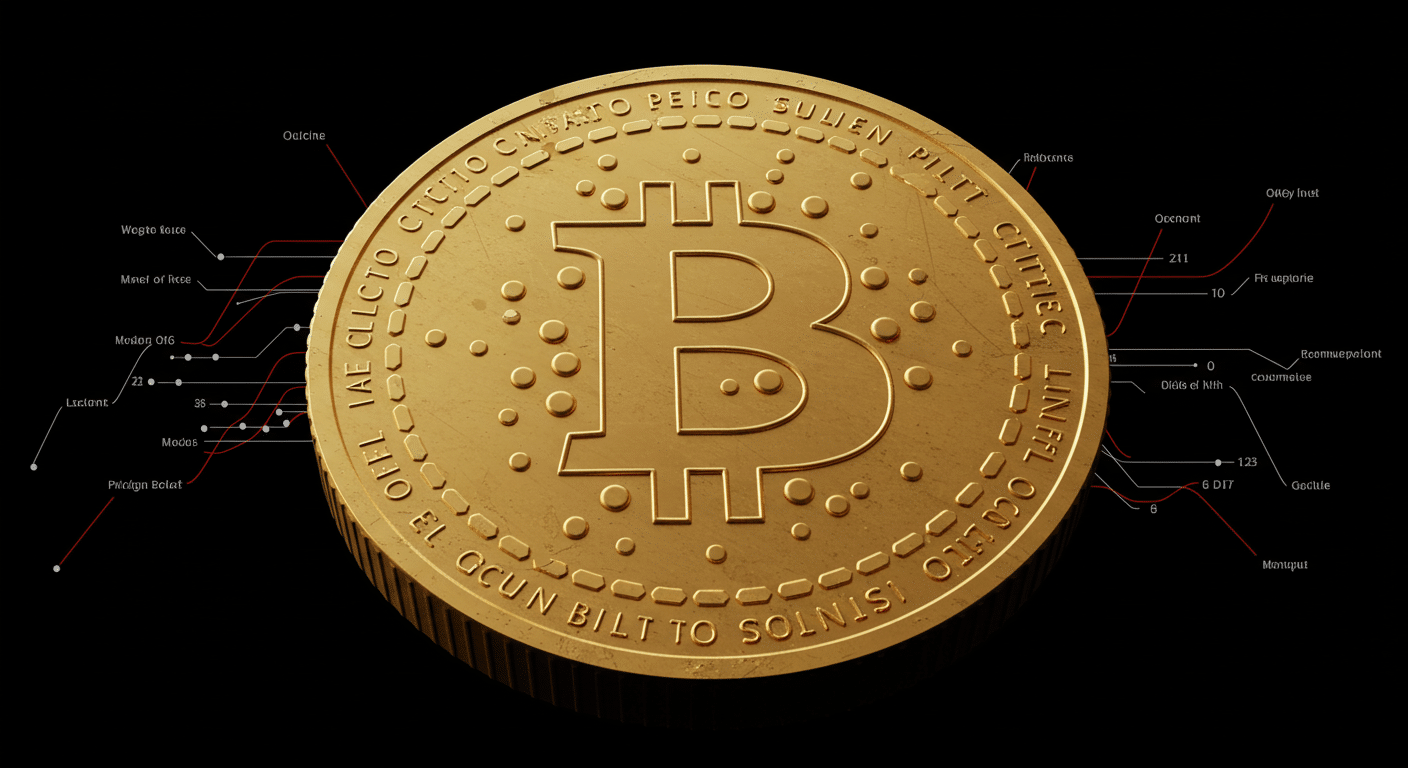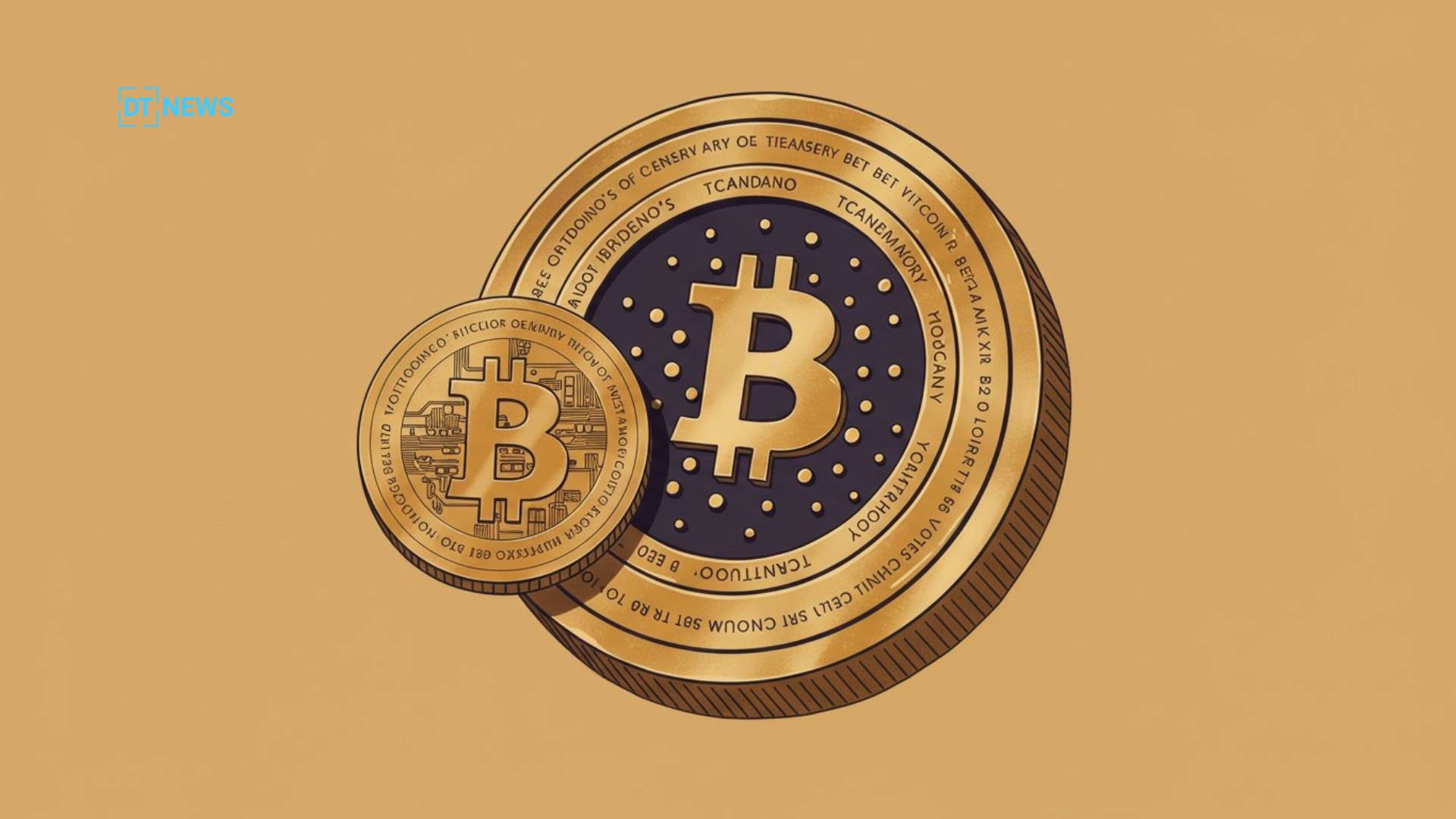Cardano’s leadership is proposing a bold financial pivot to enhance its presence in the decentralized finance (DeFi) space. The network plans to convert 5–10% of its $1.2 billion ADA treasury into Bitcoin and stablecoins. This move aims to increase treasury returns and strengthen Cardano Bitcoin treasury strategy, Cardano’s competitiveness in the wider crypto market.
- Cardano Bitcoin Treasury Strategy: Stability and Yield Through Diversification
- Cardano Plans Bold Bitcoin Treasury Shift
- Cardano Needs Stablecoin Boost for DeFi
- FAQs
- What percentage of Cardano Bitcoin treasury strategy will be converted?
- How will the conversion affect ADA’s price?
- Why is Cardano targeting Bitcoin and stablecoins?
- What is Cardano’s current inflation rate?
- How much is Cardano currently engaged in DeFi?
- Glossary of Key Terms
- References:
Cardano Bitcoin Treasury Strategy: Stability and Yield Through Diversification
Cardano intends to reallocate a portion of its native token holdings into harder assets like Bitcoin and tokenized dollars. This is similar to the sovereign wealth funds, which aim at a stable return by diversifying their exposure. The proposal reflects a desire to anchor Cardano within the growing DeFi ecosystem.
The bonds of stablecoins such as USDT and USDC also include exposure to U.S. Treasuries and, thus, high-yield assets with the backing of government bonds. Instead, Bitcoin is a fixed supply and demand decentralized store of value. By combining the two, Cardano Bitcoin treasury strategy can protect against inflation and earn returns.
The suggested conversion would amount to up to 140 million ADA, which would be operated via OTC desks with TWAP strategy to reduce price shock. This plan is to spread out the purchases to prevent slippage and maintain market sentiment. Cardano aims to preserve ADA’s average price while shifting its asset base.
Cardano Plans Bold Bitcoin Treasury Shift
Cardano Bitcoin treasury strategy decision is influenced by macroeconomic trends, particularly the ongoing erosion of USD purchasing power and rising government debt. As U.S. spending increases, assets like Bitcoin gain value as hedges against fiat depreciation. Meanwhile, stablecoins are becoming tools of financial hegemony due to their deep ties with U.S. Treasuries.

Tether and Circle have emerged as major buyers of U.S. debt, indirectly supporting interest rate stability. Tether’s Q1 profit exceeded $1 billion, highlighting the profitability of stablecoin operations in current market conditions. Cardano Bitcoin treasury strategyy exposure to these instruments could generate consistent returns in a low-risk manner.
This financial positioning may also help mitigate ADA’s inflationary pressure. With a 2% annual inflation rate and 35.36 billion tokens in circulation, managing demand becomes critical. Channeling returns into future ADA repurchases may support price stability and incentivize long-term holding.
Cardano Needs Stablecoin Boost for DeFi
Cardano still lags behind major competitors in blockchain performance and DeFi integration. Currently ranked 34th in transactions per second, Cardano processes just 0.26 tx/s despite a theoretical capacity of 18.02. Finality times of two minutes further reduce its competitiveness against faster chains like Solana.

Cardano’s top DeFi dApp, DexHunter, leads in wallet activity, while Lenfi holds the most total value at $11.62 million. In contrast, Solana and Ethereum dominate with billions in total value locked across hundreds of dApps. Cardano’s DeFi ecosystem remains underdeveloped, despite being older than some competitors.
With only $31.44 million in stablecoins and $267.5 million in total DeFi value, Cardano Bitcoin treasury strategy needs a liquidity catalyst. A treasury-funded stablecoin inflow could reduce slippage, improve yields, and attract users to lending platforms. Increased activity may boost Cardano’s network value and developer interest over time.
Summary
Cardano’s plan to convert part of its ADA treasury into Bitcoin and stablecoins marks a significant strategic move. It will fix treasury returns, increase the cost of ADA with subsequent buybacks, and make DeFi more active. Despite technical limitations and lagging performance, this approach could help Cardano attract more liquidity and utility, pushing it closer to becoming a top DeFi blockchain.
FAQs
What percentage of Cardano Bitcoin treasury strategy will be converted?
Cardano plans to convert between 5% and 10% of its ADA treasury into Bitcoin and stablecoins.
How will the conversion affect ADA’s price?
The execution strategy will use OTC trading and TWAP to avoid abrupt price declines during the conversion.
Why is Cardano targeting Bitcoin and stablecoins?
These assets provide stability, yield, and exposure to macroeconomic trends that align with long-term value preservation.
What is Cardano’s current inflation rate?
Cardano maintains an inflation rate of around 2% per year, similar to the U.S. Federal Reserve’s target.
How much is Cardano currently engaged in DeFi?
As of now, Cardano has around $267.5 million locked in DeFi and $31.44 million in stablecoins.
Glossary of Key Terms
Cardano – A proof-of-stake blockchain focused on scalability, interoperability, and sustainability, founded by Charles Hoskinson.
ADA – The native cryptocurrency of the Cardano blockchain, used for transactions, staking, and governance.
DeFi (Decentralized Finance) – A financial ecosystem built on blockchain technology allowing peer-to-peer transactions without intermediaries.
Stablecoin – A digital asset pegged to fiat currency (e.g., USD), offering price stability and liquidity.
TWAP (Time-Weighted Average Price) – A trading strategy that spreads purchases over time to minimize market impact.
OTC (Over-the-Counter) – A private market transaction that occurs directly between parties outside traditional exchanges.
TVL (Total Value Locked) – A metric representing the total amount of crypto assets deposited in a blockchain’s DeFi protocols.
Inflation Rate – The rate at which a cryptocurrency’s supply increases over time.
Proof-of-Stake (PoS) – A consensus mechanism where validators are chosen based on the number of tokens they hold and are willing to “stake.”
Token Buyback – A method where an entity repurchases its own tokens from the market to reduce supply and potentially boost value.
References:



















































































































